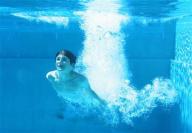
Over 65? Take lots of vitamin D to prevent a fall
Important news for seniors: A daily dose of vitamin D cuts your risk of falling substantially, researchers reported today.
But not just any dose will do. “It takes 700 to 1000 international units (IU) of vitamin D per day and nothing less will work,” Dr. Heike A. Bischoff-Ferrari, who directs the Center on Aging and Mobility at the University of Zurich, Switzerland, noted in an email to Reuters Health.
Those recommendations – which are higher than those by the U.S. Institute of Medicine — are based on the results of eight studies that looked at vitamin D supplements for fall prevention among more than 2,400 adults aged 65 and older. Falls were not notably reduced with daily doses of vitamin D lower than 700 IU.
An analysis of all eight studies, posted online today in the British Medical Journal, add weight to several others which have shown that vitamin D improves strength and balance, and bone health in the elderly, the researchers note.
Each year, 1 in 3 people aged 65 and older, and 1 in 2 aged 50 and older, fall at least once. Nine percent of these mishaps require a trip to the emergency room and around 6 percent result in a fracture. Many elderly people who fall end up in nursing homes.
“Falls are important events to prevent,” Bischoff-Ferrari said, “and 700 to 1000 IU of vitamin D per day is safe and inexpensive,” but it’s higher than the currently recommended by the Institute of Medicine for older adults. (The Institute recommends 400 IU per day for adults between age 51 and 70, and 600 IU per day for those aged 70 years and over.)
The current findings, Bischoff-Ferrari said, provide an argument to revise the recommendations. They looked at two forms of the vitamin: Vitamin D3, or cholecalciferol, which is more readily absorbed by the body and more potent than vitamin D2, or ergocalciferol, the form often found in multivitamins.
“At the higher dose of 700 to 1000 IU vitamin D, the benefit on fall prevention is significant — at least 19 percent, 26 percent with vitamin D3,” Bischoff-Ferrari said.
While vitamin D3 seemed more potent than D2, forms of vitamin D marketed as “active,” such as calcitriol, did not seem to be more effective than standard vitamin D supplements, the researchers found. Such active forms are more expensive and carry a higher risk of elevated calcium levels, which have been linked to hormone problems and cancer.
Moreover, the effect of 700 to 1000 IU vitamin D daily is kicks in “in a few months and is sustained over years, and the benefit is independent of age and present in those living at home and those living in nursing homes,” Bischoff-Ferrari noted.
Over sixty five , Over sixty five Health, Over sixty five Health Latest, Over sixty five Health Information, Over sixty five Health information, Over sixty five Health Photo,Over sixty five for Weight Health photo, Over sixty five Health Latest, Over sixty five Health latest, Over sixty five for Weight Health Story, Over sixty five Video, Over sixty five video, Over sixty five Health History, Over sixty five Health history, Over sixty five over Picture, history, Over sixty five Asia, Over sixty five asia, Over sixty five Gallery, Over sixty five for Weight gallery, Over sixty five Photo Gallery, Over sixty five Picture, Over sixty five picture, Over sixty five Web, Malaysia Health, web Health, web Health picture, video photo, video surgery, gallery, laparoscopy, virus, flu, drug, video, Health Health, calories, photo, nutrition, health video, symptoms, cancer, medical, beating, diet, physical, Training, organic, gym, blister, exercise, weightloss, surgery, spiritual, eating, tips, skin, operation, bf1,




